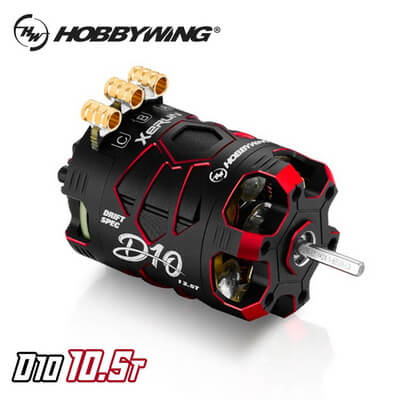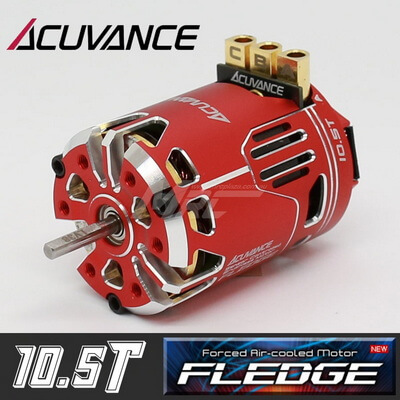A Comprehensive Guide to RC Drift Motors
I am often asked the question “What Motor for RC Drifting?” The short answer is: “One Designed for RC Drifting, either a 10.5T or 13.5T that is Brushless, sensored and from a reliable brand”
Frank – RC Drift Qld
Let me help you decide What Motor for RC Drifting is going to be the best for your specific needs. RC drifting is more than just a hobby. It’s a thrilling motorsport that combines precision driving with the adrenaline rush of high-speed maneuvers. At the heart of every RC drift car lies its motor, a critical component that determines its performance on the track.
In this comprehensive guide, I’ll delve into the world of RC drift motors, exploring the different types, sizes, and considerations to help you make an informed choice for your drifting adventures.
Types of Motors for RC Drifting:
When it comes to deciding on What Motor for RC Drifting, first you need to understand the difference between a brushed motor and brushless motor.
- Brushed Motors: These traditional motors feature brushes that deliver power to the rotor, generating rotational motion. While brushed motors are durable and cost-effective, they tend to have lower efficiency and limited adjustability. This technology is no longer the only choice for RC Drifters.
- Brushless Motors: Brushless motors employ a more advanced design, utilizing electronic commutation instead of brushes. This results in higher efficiency, smoother operation, and greater power output, making them ideal for high-performance RC drifting.
Motor Size and Turns:
Given that we are working out What Motor to choose for RC Drifting, most RC Drift motors will be described in Turns, not KV.
- Motor size and turns refer to the physical dimensions and winding configuration of the motor’s coils, respectively.
- 10.5T and 13.5T are the two most common sizes for RC drift cars, offering a balance of speed and torque suitable for various track conditions.
- The common can size is referred to as 540
- These motors are particularly popular for smooth surfaces such as concrete, P-Tile, and epoxy tracks, where traction is required.
KV Rating:
- The KV rating indicates the motor’s RPM per volt of input power, with higher KV motors spinning faster.
- Choosing the appropriate KV rating depends on factors such as track conditions, vehicle setup, and desired performance characteristics.
- Lower KV motors provide more torque and are well-suited for technical drifting, while higher KV motors offer increased top speed for wide-open tracks.
Torque vs. Speed:
- Torque refers to the rotational force produced by the motor, while speed pertains to its rotational velocity.
- Achieving the right balance between torque and speed is essential for optimal drifting performance.
- More torque results in smoother and more controlled drifts, while higher speed allows for faster transitions and maneuvers.
- A 13.5T motor will have more torque and less Speed (RPM’s at full Throttle) than a 10.5T motor.
- You can use Boost Features of your Sensored ESC / Sensored Motor to increase your torque if your ESC offers boost features.
Motor Mounting Options:
- Motor mounting plays a crucial role in determining the vehicle’s balance and handling characteristics.
- Various mounting options, including front-mounted, mid-mounted, and rear-mounted motors, offer different weight distributions and handling dynamics.
- Choosing the optimal motor placement depends on factors such as chassis design, track layout, and personal driving preferences. Although most you will see these days are Mid, High or Rear mounted motors for smooth surfaces as people are aiming for gaining more rear traction on low traction surfaces.
Cooling and Maintenance:
Some people may say things like, you don’t need a fan on your Drift motor because where you drift is cool or air-conditioned. While this does make a difference, you always was cooling in my opinion. It will extend the life of your motor and performance.
- Proper motor cooling is essential to prevent overheating and ensure consistent performance during extended drifting sessions.
- Regular maintenance, including cleaning and inspection, helps prolong the motor’s lifespan and reliability.
- Investing in quality cooling fans and heat sinks, along with adhering to a routine maintenance schedule, can enhance motor performance and longevity.
Budget Considerations:
- Balancing performance requirements with budget constraints is crucial when deciding on What Motor for RC Drifting.
- While high-end motors offer superior performance and durability, they often come with a higher price tag.
- Assessing the cost-effectiveness of different motor options and prioritizing essential features can help you find the best value for your drifting needs.
Sensored vs. Sensorless Motors and ESCs:
- Sensored Motors and ESCs: Sensored systems utilize sensors to detect the rotor position, resulting in smoother startup and low-speed control. They offer precise throttle response and are ideal for technical drifting maneuvers.
- Sensorless Motors and ESCs: Sensorless systems do not rely on sensors to determine rotor position. This results in simpler and often more affordable setups. While they may lack the precision of sensored systems, they offer robust performance and are suitable for general drifting applications. They are not the best choice for RC Drifting on smooth surfaces.
Boost and Turbo Features:
- Some sensored ESC’s motors come with advanced features such as boost and turbo, which enhance performance during acceleration and top speed runs.
- This is only available if you have both a Sensored ESC and a Sensored Motor
- Boost increases the motor’s power output for a duration before full throttle. As a result, providing an extra burst of speed when needed. Depending on the ESC, this can often be turned on at a certain rev range.
- Turbo allows users to adjust the timing advance dynamically at full throttle.
- The way boost and turbo works depends on the ESC’s abilities and tuning options.
- If using Turbo and boost, I recommend using a higher end battery that can handle the high current draw.
Popular Motor Brands:
- Leading motor brands such as Zombie, Hobbywing, Yokomo, ReveD, Surpass / Rocket and Acuvance are renowned for their quality, performance, and reliability.
- Each brand offers a diverse range of motors tailored to various skill levels, track conditions, and driving styles.
- Consider factors such as brand reputation, customer support and compatibility when reviewing What Motor for RC Drifting.



What Motor for RC Drifting Conclusion:
In conclusion, choosing the right motor for RC drifting is essential for maximizing performance and enjoyment on the track. By understanding the different types, sizes, and considerations associated with RC drift motors, you can make an informed decision that suits your skill level, driving style, and budget.
Remember, if you go with a higher turn motor, you can always use your throttle curve to adjust it to your driving style. I personally like Team Zombie 10.5T motors as they are a high torque motor as well as 10.5T allowing me to use the throttle curve to suit my style.
Whether you’re a beginner or seasoned veteran, selecting the perfect motor will ensure that your RC drift car delivers thrilling drifts and exhilarating performance every time you hit the track. This is what it will come down to when thinking about what motor is best for RC Drifting.


Leave a Reply
You must be logged in to post a comment.